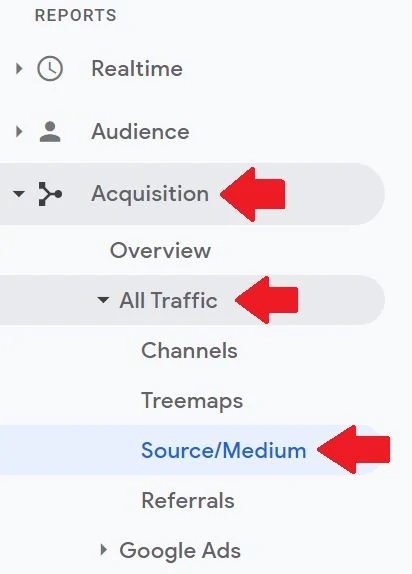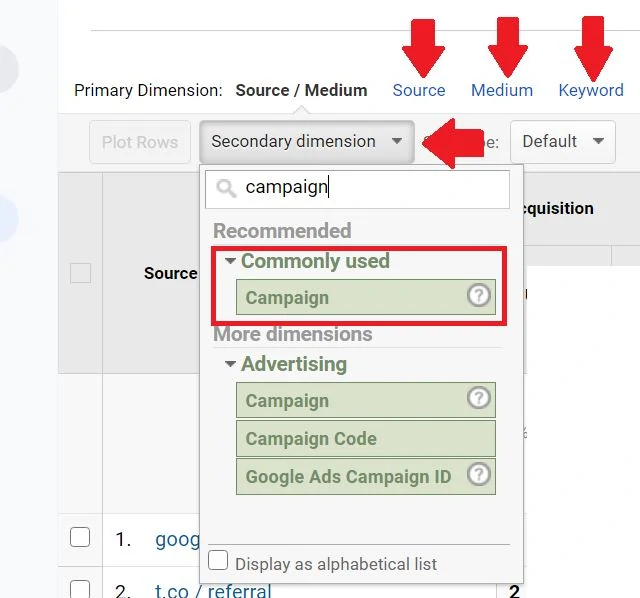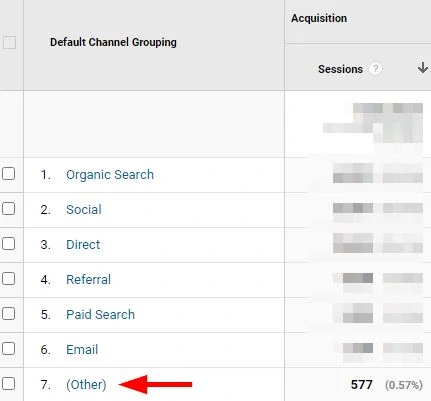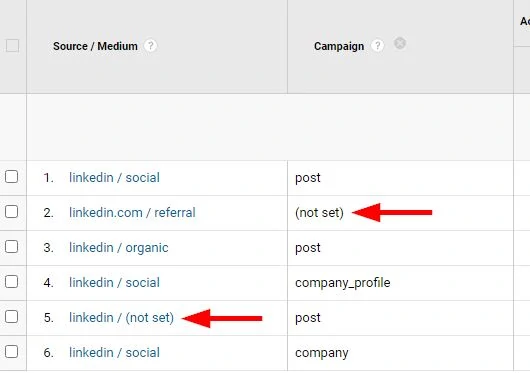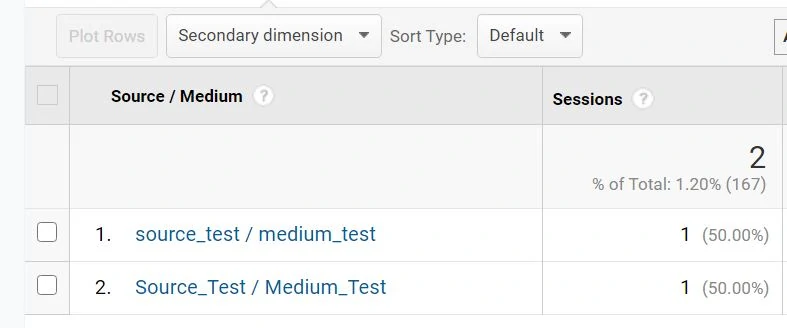UTM Code Generator (Add Parameters in Bulk)
Add different UTM codes to different Campaign URLs in seconds. Don’t forget to bookmark and share this page!
| UTM Code | Description |
|---|---|
Campaign Source (Required)utm_source | Traffic sourcefacebook, twitter |
Campaign Medium (Required)utm_medium | Referrer mediumcpc, newsletter |
Campaign Name (Optional)utm_campaign | Marketing campaignchristmas_sale, summer_sale |
Campaign Term (Optional)utm_term | Paid search keywordsshoes, shirts |
Campaign Content (Optional)utm_content | Advertisement materialbanner_1, video_2 |
How To Use This UTM Code Generator
Add UTM codes to multiple URLs in seconds. No need to process a URL one by one. Paste URLs and the tool adds UTM codes in bulk. Copy the URL list then paste it to your custom spreadsheets.
This is free and no required browser installations. No need to export the results because this UTM code generator avoids spreadsheet headaches. Get granular with your UTM tracking with ease.
The result table is tab-separated values. This means when copied and pasted on your custom spreadsheet, the values are in different cells already. This avoids manual work and you can build marketing reports faster.
Features:
– Add one input per line.
– Generate UTM codes in bulk to multiple URLs.
– Replace spaces with underscores, hyphens or plus.
– Option to change characters into lowercase.
– Copy URL or entire table to clipboard.
Limitations:
– No URL shortener support.
– No integrations to other third-party tools.
– No export to a spreadsheet file.
– No URL-encoding like %2B, %2F, %20, or %3A.
– No support for URL fragments or #
What Does UTM Stand For In Marketing?
UTM means Urchin Tracking Module (or Urchin Traffic Monitor). Why the name Urchin? The company that created Google Analytics (before Google acquired it) was called Urchin.
In 1997, Urchin was a software company that specializes in web statistics. This year is around the same year Google was invented.
In 2002, Urchin introduced the UTMs to get more out of the web statistics.
In 2005, Google acquired the Urchin company and renamed the software tool into Google Analytics. UTM tagging has been here ever since.
What Are UTM Codes?
UTM tracking is a method to track and tag campaigns through the URL (Uniform Resource Locator). UTM codes are URL query strings that assign specific values.
UTM codes enable you to add custom queries and naming to your reports. These UTM codes are used in Google Analytics reports. But, they are also used by other marketing analytics tools.
How To Add UTM Codes To URLs
UTMs are parameters added after URLs. This to track marketing campaigns like Facebook or email. This helps analysts collect data and create marketing reports.
This is a URL:https://www.yourdomain.com/page
This is a URL with UTM codes:https://www.yourdomain.com/page?utm_source=facebook&utm_medium=social&utm_campaign=christmas_sale
The red color is the UTM. This information is passed along when a user lands on the website. Then Google Analytics see these parameters and record the information to its reports. Use the UTM code generator above to automate the process if you’re not sure how to do it properly.
Key-Value Pairs of UTM Codes
UTM codes are key-value pairs. The key is the UTM naming (utm_source or utm_medium). The value is the marketing campaign you add (facebook or christmas_sale).
| Key | Value | Key-Value Pair |
|---|---|---|
| utm_source | google, facebook, twitter | utm_source=facebook |
| utm_medium | cpc, email, newsletter | utm_medium=cpc |
| utm_campaign | summer_sale, christmas_sale | utm_campaign=summer_sale |
| utm_term | shoes, shirts, dress | utm_term=shoes |
| utm_content | banner_1, video_2 | utm_content=banner_1 |
Source – The source of the traffic or referrer.
Medium – The medium of the traffic or referrer.
Campaign – The campaign name of the traffic or referrer.
Term – The keyword term of the traffic or referrer. This is for paid search campaigns like Bing Ads.
Content – The ad creative of the traffic or referrer.
The ‘keys’ of the UTM codes are fixed. These shouldn’t change. If you decide to use a UTM key, the spelling and name should be exact. For example, ‘utm_source’ should be the same 100% when adding it to the campaign URL.
Since this is a pair, a ‘value’ should be added with the ‘key’, hence a ‘key-value’ pair. Knowing a little bit of code can help you understand this concept.
The ‘value’ of the UTM codes CAN change. It’s whatever name you wish. For example, if you use ‘utm_source’, you can add ‘facebook’ as a value. In the end, the UTM code is utm_source=facebook. This parameter is added to the end of the campaign URL.
UTM Generator For Facebook Campaigns
A UTM generator for Facebook is a tool designed to help marketers create custom UTM (Urchin Tracking Module) parameters for Facebook campaign URLs. These are added to the end of URLs to track the performance of campaigns. By adding these UTM parameters such as source, medium, or campaign name, marketers can measure the impact of their Facebook activities through Google Analytics.
The benefits of using a UTM generator for Facebook include accuracy and improved marketing insights to Google Analytics. It provides clarity on how users interact with Facebook ads and which campaigns has the best performance. It helps in attributing conversions and user actions to specific Facebook campaigns, making it easier to calculate ROI. Using UTMs essentially integrates Facebook campaign tagging to Google Analytics.
How To Use UTM Codes
UTM tracking dictates the names of the traffic sources in Google Analytics. UTM tracking translates to the Source / Medium reports as a start. Other web analytics tools use this but Google Analytics is the example below. Note that this is Universal Analytics (UA-XXXXXXXX-X), not Google Analytics 4.
Go to Acquisition > All Traffic > Source / Medium
The UTM codes become Dimensions in Google Analytics.
Source is the utm_source key parameter
Medium is the utm_medium key parameter.
Campaign is the utm_campaign key parameter.
Keyword is the utm_term key parameter.
Ad Content is the utm_content key parameter.
If you use all the UTM tags to your campaign URL, all five Dimensions populate.
Add the appropriate ‘Secondary dimension’ depending on your needs. You should see a button to add a second dimension. You can search either ‘Source ‘, ‘Medium’, ‘Campaign’, ‘Keyword’, or ‘Ad Content’. Or you click the tabs for ‘Primary Dimension.
Segmenting Google Analytics for data analysis is the reason for UTMs. An important thing to note about UTM tags is to never use them for internal link tracking. Adding them for internal links will bloat the self-referral traffic under the Source / Medium dashboard.
When To Use UTM Codes
UTM codes are useful when tracking non-Google channels like email campaigns. When setting up email campaigns, you can add the UTM codes with the custom name. Heck, you can use UTMs on your email signatures.
Use UTM tagging as well in social media through tools like Linktree and Linkin.bio. Add URLs with UTM codes on your Linktree and Linkin.bio profile. Track these if you choose to have your audience go to your website. Then you can analyze your audience engagement in Google Analytics.
It’s possible to name UTM codes in whatever way you wish. There are no hard rules on how to name your UTM-ed campaigns. But, there are best practices and things to consider when tagging campaigns.
UTM Codes Best Practices and Tips
UTM tagging comes with best practices such as labeling for Google Analytics reports. The rule of thumb is to always stay consistent to avoid mix-ups. And make sure the required fields Source and Medium are populated. Label all your campaigns as much as possible to avoid gaps and dirty data.
The labeling should always match the campaign names for consistency. So, you don’t have to go back and figure out what campaign the UTM was for. This is to avoid getting (other) and (not set) data on your Google Analytics reports.
Use lowercase
Google Analytics is case sensitive and doesn’t aggregate data based on character. If you have two ‘Sources’, one is ‘Facebook’ and one is ‘facebook’, Google Analytics reports them separately. Here’s a screenshot.
The UTM code generator gives an option NOT to convert to lowercase in case your campaigns use this naming convention. But, it’s always recommended to use lowercase.
Use underscores or hyphens for spaces
Use underscores or hyphens for naming conventions. As mentioned, it’s up to you how to name your tracking. The most important thing is to stay consistent and simple. Make the URLs and UTM tracking clean as much as possible.
Add plus symbols in the input fields and the UTM generator creates a URL with plus symbols. But the symbols translate into spaces in Google Analytics reports. Google Analytics is bizarre that when the URL with UTM tagging contains the plus symbols. The naming becomes a space once the data reports to GA.
Conclusion: Never Ignore UTM Parameters
Ignoring UTM parameters can lead to incomplete data, making it harder to understand where your traffic is coming from. Tagging your links ensures accurate attribution, which is crucial for measuring the performance of your marketing efforts. To avoid gaps in your data and make smarter decisions, consider working with a Google Analytics attribution consultant who can help set up a reliable and effective tracking strategy.



